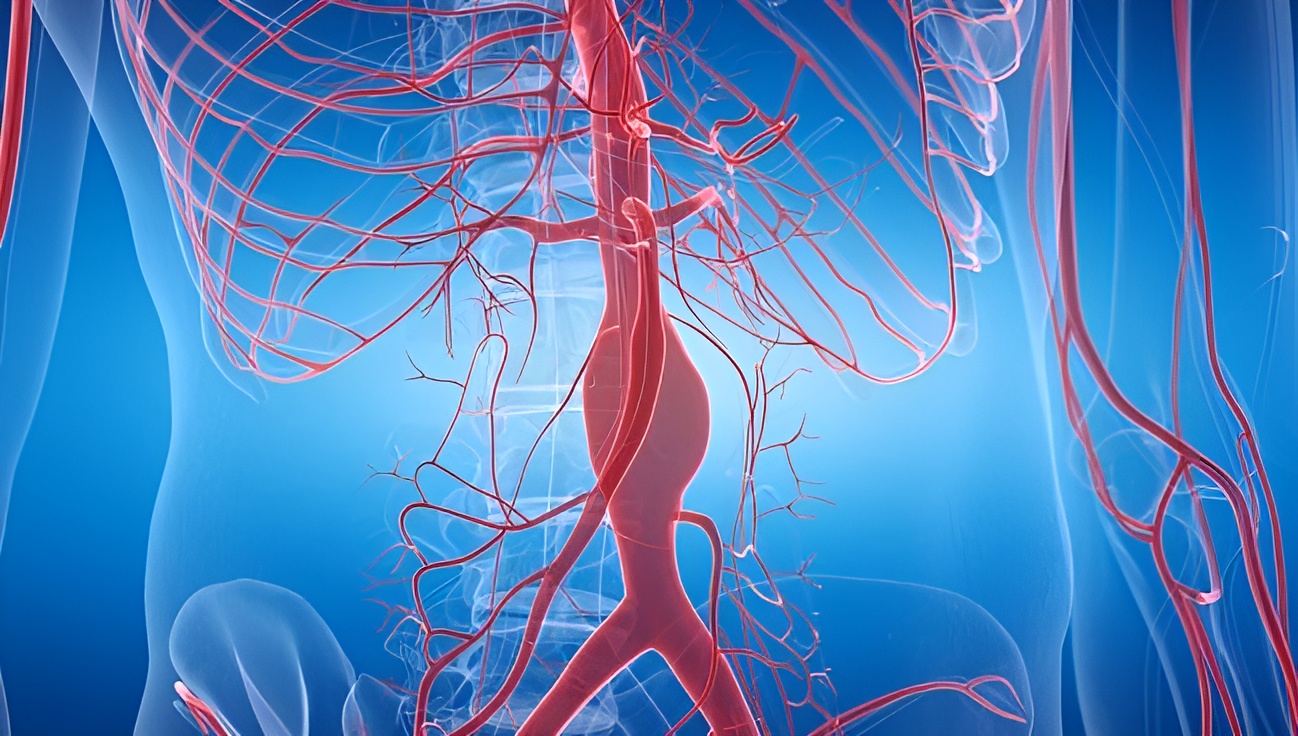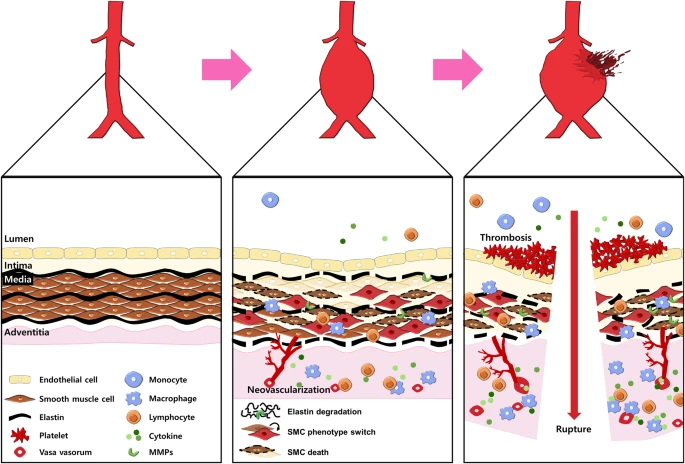

In modern vascular medicine, we’ve come a long way. The introduction of endovascular aortic repair (EVAR, TEVAR, FEVAR, BEVAR, etc.) has transformed the treatment of complex aneurysms, dissections, aortic traumatic injuries, and penetrating ulcers. We now deploy stent grafts through small groin punctures instead of thoracotomies. We reconstruct visceral branches without a scalpel. We can even reline the aortic arch without cardiopulmonary bypass.
But for all our progress, one fundamental truth remains:
We are treating a manifestation, not a cause.
We are repairing an event in a disease that is still very much ongoing.
This is the concept of Progressive Aortic Disease, and it deserves more attention.

The aorta is not static plumbing. It is a dynamic, biologically active structure, constantly subject to the forces of:
With time, this biological machinery fatigues. What begins as segmental degeneration—an infrarenal aneurysm, a descending thoracic dissection—often continues beyond the treated segment. The pathology progresses, both proximally and distally, and even seemingly “normal” segments of the aorta can deteriorate over time.
This is not device failure. This is aortic disease progression.
It’s tempting to believe that newer generations of stent grafts, branched configurations, or improved sealing materials will somehow overcome the biological trajectory of disease. And while innovation is essential, it must be viewed as a tool, not a cure.
A beautifully executed FEVAR today may still face:
These are not procedural mistakes—they are expected outcomes in the life cycle of a progressively diseased aorta.
When we treat an aneurysm or seal a dissection flap, we interrupt a dangerous event. We protect the patient from rupture, malperfusion, or death.
But the aorta is still degenerating.
And unless we commit to a lifelong management model, we risk trading one catastrophe for another down the line.
Understanding the nature of disease progression allows us to anticipate some of the most common long-term complications:
These are not occasional complications—they are common realities of aortic disease as a living, progressive disorder.
Every aortic intervention should be viewed not as a solution, but as a chapter in a longer story. That story must include:
At Aortic Academy, we advocate for an end-to-end approach to aortic disease. Every procedure is an inflection point—but never the end point. The progressive nature of aortic degeneration demands that we build clinical pathways, device strategies, and team cultures that prioritize:
Because while technology enables us to repair an aorta today, biology determines what happens tomorrow.
Stay tuned for upcoming case-based modules and workshops on aortic surveillance strategies, long-term device performance, and integrated disease management pathways—designed for surgeons, interventionalists, and patients alike.
The content provided in this article and throughout the Aortic Academy platform is intended for educational and informational purposes only. It does not constitute medical advice, diagnosis, or treatment, nor is it intended to replace the clinical judgment of qualified healthcare professionals. All clinical decisions—especially those concerning patient care, procedural planning, or surgical interventions—must be made by board-certified and appropriately credentialed medical practitioners based on their own professional expertise, institutional protocols, and applicable regional regulations.
While every effort has been made to ensure the accuracy, currency, and relevance of the information presented, Aortic Academy makes no representations or warranties, express or implied, regarding the completeness, applicability, or clinical appropriateness of the content. We assume no responsibility or liability for any direct, indirect, incidental, or consequential harm, loss, or damage resulting from the use of any information or guidance provided herein.
Aortic Academy does not endorse any specific device, technology, or clinical approach mentioned unless explicitly stated, and any reference to commercial products or services is for educational illustration only. Readers are strongly encouraged to consult official guidelines, product IFUs, and institutional policies before implementing any technique or procedure discussed on this site.
Use of this website and its content constitutes agreement to these terms. For full legal terms, please refer to our Terms of Use and Privacy Policy.
© 2025 Aortic Academy. All content Copyrighted. All trademarks reserved.